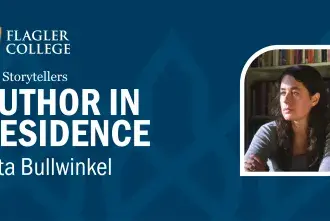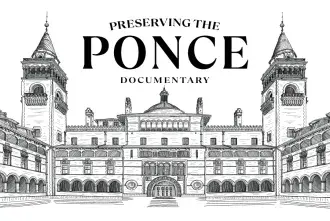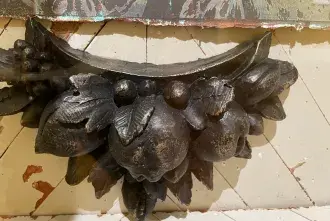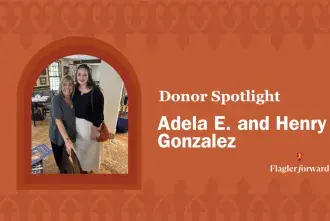
This work sheds light on the hidden logic behind everything from traffic flow to the spread of information.
Christina Mark, a Flagler College student, spent the summer participating in the Research Experience for Undergraduates Program in Applied Mathematics at Florida State University.
“The program sought to give undergraduates research experience in topics ranging from biomathematics to financial math,” Mark said. “I worked with two other students on a project that leaned heavily into biomathematics. Under the guidance of Dr. Bhargav Karamched, I adapted a previously developed model simulating the collective behavior of army ants. The model incorporated parameters to define trail-forming behavior, as well as a differential equation that controlled the secretion and diffusion of pheromone across the lattice model. My mentor encouraged us to explore the model and come up with our own questions, giving us a glimpse into the research process from the ground up.”
After running experiments on how the model simulated ant trails based on the arrangement of food sources around a central nest, Mark posed a key question: How does the spatial arrangement of food sources on a lattice influence the metastability of ant trail formations?
Her goal was to determine the most optimal arrangement of food sources relative to the nest—by angle and distance—to sustain multiple trails for the longest period of time. This approach better reflects real-world army ant behavior observed in experiments. To accomplish this, she created figures to track the influence of angle and distance on ant behavior, then performed a linear regression on ant count data.
“At the end of the program, I delivered a presentation with my group on my findings regarding the variable metastability of the simulated system based on the spatial geometry of food sources,” Mark said. “Overall, I had a great experience, and it was only possible thanks to the guidance of my mentors at Flagler College.”
Securing a spot in the FSU Applied Mathematics REU program is no small feat. The highly competitive, fully funded program offers students an immersive dive into real-world mathematical research. Participants gain training in areas such as mathematical modeling, computational methods, and scientific communication. It’s an unparalleled opportunity to build research skills, strengthen a resume, and lay the groundwork for potential publications—providing a strong foundation for academic and professional success in a demanding field.



